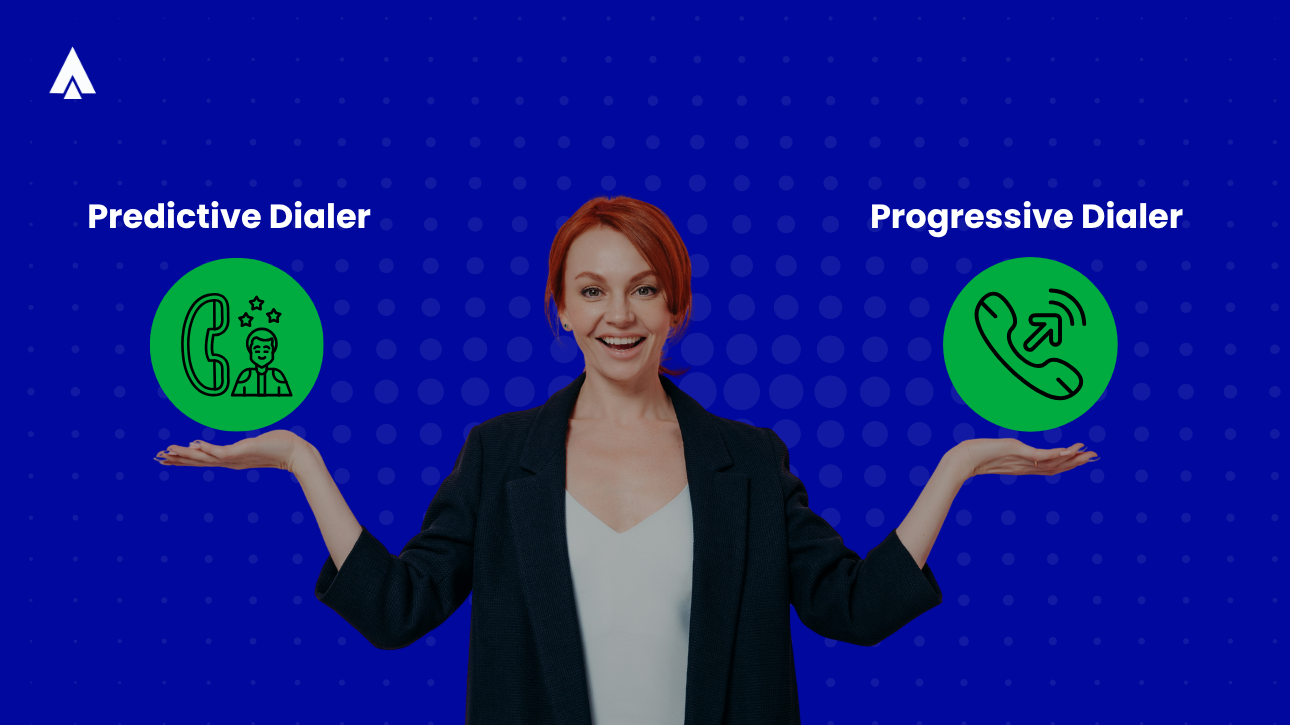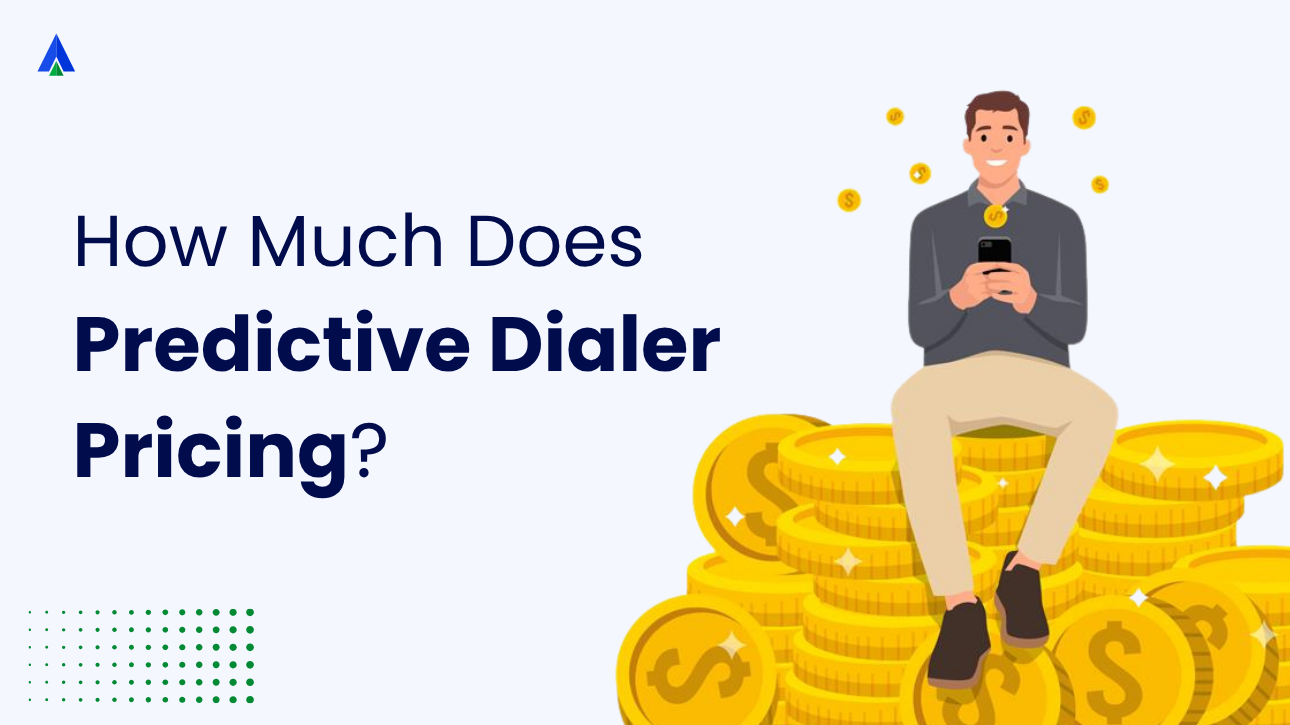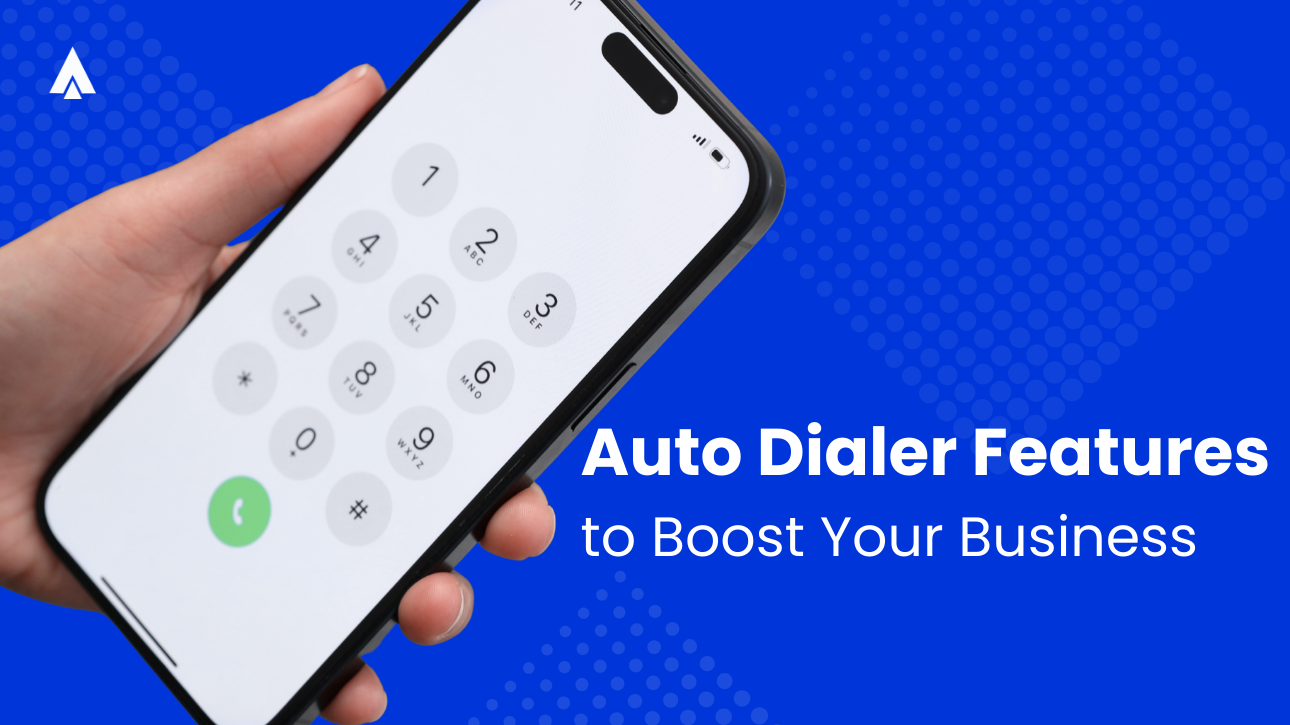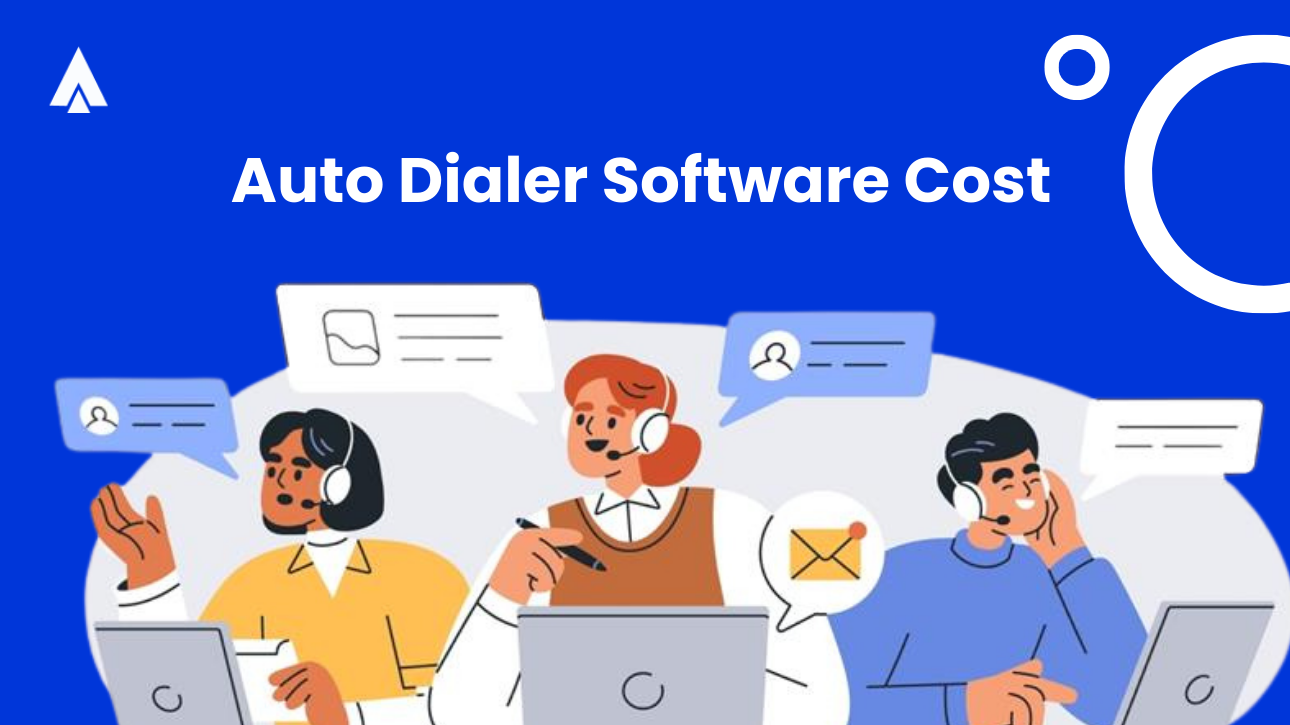If your customer facing teams still run on manual dialing, here’s a reality check: Your agents are either waiting idly between calls, or your customers hang up before anyone answers. There’s rarely a middle ground with manual dialing, and both scenarios are costing you conversions.
The solution? Automated dialer system like predictive and progressive dialers. But choosing between a predictive dialer vs progressive dialer is not simple. It isn’t as straightforward as picking the “faster” option. The wrong choice can tank your customer experience faster than you can say “call abandonment rate.”
This guide breaks down the progressive dialer vs predictive dialer debate with real operational considerations. This way, you can match your call center’s specific needs with the right technology.
What is a Progressive Dialer?
A progressive dialer is an auto call dialer that initiates one outbound call per available agent. Think of it as a respectful middleman. It only dials when an agent signals readiness and briefly presents call information before connecting.
Unlike manually dialing numbers one by one, progressive dialers automate the process while maintaining agent control. The system pulls the next contact from your list, displays relevant customer data, then dials only after the agent reviews it.
Pros of Progressive Dialers
Here are some advantages of progressive dialers:
- Agent preparation time: Before each call connects, agents see customer history, previous interactions, and relevant notes. This five-second window transforms cold outreach into informed conversations.
- Reduced call abandonment: Since the system ensures agent availability before dialing, customers never reach dead air. Every answered call immediately connects to a ready agent.
- Quality over quantity: Progressive dialing prioritizes meaningful interactions. Agents have time to personalize their approach, research account details, and prepare value propositions specific to each prospect.
- Compliance-friendly: These dialers naturally align with regulations that penalize excessive abandoned calls. The one-to-one ratio between agents and calls keeps your operation safely compliant.
- Better for complex sales: High-ticket items, B2B sales, and consultative selling benefit enormously from the preparation time. When you’re selling enterprise software or financial services, those extra seconds reviewing account history matter.
Cons of Progressive Dialers
Here are a few challenges you might face while onboarding a new progressive dialer:
- Lower call volumes: The one-call-per-agent model means reduced throughput compared to aggressive dialing strategies. With 72% of customers demanding immediate service, this limitation can create capacity constraints during peak campaigns.
- Agent idle time: Even automation can’t eliminate gaps between calls. Agents experience brief waiting periods while the system processes disconnected numbers, voicemails, and busy signals.
- Resource intensive: To maintain high call volumes, you’ll need more agents on deck. The direct correlation between available agents and dialing capacity means scaling requires proportional hiring.
- Not ideal for simple outreach: If you’re conducting straightforward surveys, appointment reminders, or basic notifications, the preparation time becomes unnecessary overhead.
How Does Progressive Dialing Work?
Progressive dialing follows a straightforward sequence designed to maximize agent effectiveness:
- Agent readiness signal: The agent completes their current interaction and marks themselves available in the system.
- Information preview: The dialer displays the next contact’s details like name, account history, previous call notes, and any relevant context.
- Automated dialing: Once the agent acknowledges readiness (typically within 3-5 seconds), the system automatically dials the number.
- Call screening: The dialer detects busy signals, voicemails, disconnected lines, and unanswered calls, filtering these out before agent connection.
- Live connection: Only when a real person answers does the call transfer to the agent, who’s already briefed and prepared for the conversation.
This workflow eliminates the mechanical aspects of manually dialing while preserving the human judgment essential for quality customer interactions.
What is a Predictive Dialer?
A predictive dialer uses statistical algorithms to dial multiple numbers simultaneously for each available agent. It’s designed to maximize agent talk time by predicting exactly when they’ll become available.
The system analyzes patterns like average call duration, typical answer rates, and time between calls. It then dials accordingly. If algorithms predict that two out of ten calls will be answered and that Agent Smith will be free in 18 seconds, it dials all ten numbers now.
Pros of Predictive Dialers
Here are a few advantages of predictive dialers:
- Maximum efficiency: When cloud contact center implement predictive dialers with advanced algorithms, productivity can increase as much as 60%. The algorithm ensures agents spend maximum time actually talking to customers.
- Minimal idle time: Predictive dialers virtually eliminate the gaps between calls. As soon as an agent wraps up, another live connection is waiting.
- Scalability without proportional staffing: You can handle massive call volumes without hiring proportionally. The multi-call dialing approach means fewer agents can reach more contacts.
- Cost efficiency: Reduced agent idle time directly translates to better cost-per-contact metrics. You’re paying for productive conversations, not waiting time.
Cons of Predictive Dialers
While predictive dialers offer many advantages, there are a few challenges too:
- Call abandonment issues: The system’s aggressive dialing can result in answered calls with no available agent. Customers hear silence or a delay, creating frustration and potential compliance violations.
- Limited personalization: Agents jump from one call directly to the next with minimal prep time. There’s no opportunity to review customer history or tailor the approach.
- Compliance risks: Many jurisdictions regulate abandoned call rates. High abandonment rates provide negative customer experiences and can trigger regulatory penalties if thresholds are exceeded.
- Algorithm dependency: Effectiveness hinges on accurate predictions. Poor algorithm calibration leads to either excessive abandonments or wasted capacity, both undermine campaign success.
- Customer experience trade-offs: The efficiency-first approach can feel impersonal. When calls connect instantly without context, agents often fumble through introductions while searching for basic information.
How Does Predictive Dialing Work?
Predictive dialing operates through sophisticated algorithmic prediction:
- Pattern analysis: The system continuously analyzes key metrics like average handle time, connection rates, agent availability patterns, and time-of-day variables.
- Predictive calculations: Algorithms calculate the optimal dialing ratio. If data shows that 30% of calls are answered and agents average 4-minute conversations, the system adjusts dialing accordingly.
- Simultaneous dialing: Based on predictions, the dialer initiates multiple calls (typically 2-4 per agent, though ratios vary based on campaign settings).
- Call screening: Like progressive dialers, the system filters out unanswered calls, voicemails, busy signals, and disconnected numbers.
- Intelligent routing: When multiple calls connect simultaneously, the system prioritizes routing to available agents. Excess connections may result in brief holds or, unfortunately, abandonments.
- Continuous optimization: Modern predictive dialers use machine learning to refine predictions in real-time, adapting to changing patterns throughout the campaign.
Progressive Dialer vs. Predictive Dialer : Key Differences
Understanding the progressive vs predictive dialer distinction requires examining how each system handles core operational elements:
| Features | Progressive Dialer | Predictive Dialer |
| Dialing Ratio | 1:1 (one call per agent) | Multiple calls per agent (2-4 typical) |
| Call Frequency | Lower volume, higher quality | Maximum volume, efficiency-focused |
| Agent Preparation | Preview time with customer data | Minimal to no preview time |
| Call Abandonment | Extremely low (near zero) | Higher risk without proper tuning |
| Idle Time | Moderate agent waiting between calls | Minimal idle time for agents |
| Algorithm Usage | Basic queueing logic | Sophisticated predictive analytics |
| Best Use Case | Complex sales, consultative calls | High-volume, transactional outreach |
| Customer Experience | Personalized, informed interactions | Fast-paced, efficiency-driven |
| Compliance Risk | Low abandonment = easier compliance | Requires careful monitoring |
| Scalability | Requires more agents for volume | Handles volume with fewer agents |
| Campaign Type | Quality-focused, relationship building | Volume-focused, simple messaging |
The predictive dialer vs. progressive dialer choice fundamentally comes down to your priority: conversation quality or contact quantity.
Progressive Dialer and Predictive Dialer : Which One Suits You Best?
Selecting between progressive dialer vs predictive dialing isn’t about which technology is “better.” It’s about alignment with your operational reality.
Choose progressive dialers when:
- Your average deal value is high
- Call scripts require customization based on account history
- You’re operating in heavily regulated industries with strict abandonment rules
- Agent training emphasizes consultative selling over transactional efficiency
- Customer experience scores directly impact your business model
- You’re conducting B2B outreach where personalization drives conversion
Choose predictive dialers when:
- You’re managing high volumes of simple, transactional calls
- The message remains consistent across most contacts (appointment reminders, payment notifications, surveys)
- Your contact center needs increased efficiency to handle peak seasonal volumes
- Cost per contact is your primary optimization metric
- You have sophisticated compliance monitoring to manage abandonment rates
- Agent talk time directly correlates with revenue (as in collections or basic sales)
Consider hybrid approaches when:
- Campaign requirements vary significantly (some need quality, others need volume)
- You manage both inbound and outbound operations
- Different product lines have different sales complexity
- Testing is needed to optimize your specific operation
Many modern auto call dialers offer both modes, allowing managers to toggle between progressive and predictive dialing based on campaign requirements. This flexibility lets you match technology to context rather than forcing one-size-fits-all solutions.
Preview dialers represent another option worth considering—they provide even more agent control than progressive systems, displaying contact information before any dialing occurs. This gives agents complete discretion about when to initiate each call.
The decision ultimately hinges on what you’re optimizing for. If increased efficiency means higher talk time, predictive wins. If it means better conversion rates through quality interactions, progressive delivers.
Wrapping Up
The predictive vs progressive dialer debate doesn’t have a universal winner because these technologies solve different problems. Progressive dialers maximize conversation quality and customer experience at the cost of throughput. Predictive dialers maximize efficiency and contact volume at the risk of impersonal interactions.
Your Acefone call center’s success depends less on choosing the “advanced” option and more on honest assessment of what your operation actually needs. High volumes of straightforward outreach? Predictive calling efficiency justifies the customer experience trade-offs. Complex sales requiring relationship building? Progressive dialing’s preparation time drives better outcomes.
Ready to optimize your outbound call center operations? Acefone’s auto call dialer solutions offer the flexibility to implement progressive, predictive, or hybrid dialing strategies tailored to your specific needs. Contact our team to discuss which approach will deliver the best results for your call center.
FAQs
Predictive dialing uses algorithms to call multiple numbers simultaneously, connecting answered calls to available agents, maximizing efficiency. Progressive dialing, however, dials one number per available agent after each call ends, ensuring no call is unanswered. Predictive dialing improves productivity; progressive prioritizes call quality and customer experience.
The best dialer depends on the call center’s goals. Predictive dialers suit high-volume outbound operations focused on maximizing agent talk time. Progressive dialers are better for sales or service centers, emphasizing personalized interactions and compliance. Many call centers use predictive dialers for efficiency, then progressive for quality follow-ups.
An auto dialer automatically dials numbers from a list but may play recorded messages or transfer calls manually. A predictive dialer, however, uses algorithms to anticipate agent availability and customer answer times. It then automatically connects live calls to agents, reducing idle time, and improving productivity. Predictive dialing is more advanced.
Predictive and progressive dialers integrate with VoIP systems through SIP protocols and cloud-based APIs. VoIP enables dialers to route calls over the internet, reducing costs and improving scalability. Integration allows call recording, analytics, CRM synchronization, and real-time call management. This enhances efficiency and connectivity in modern call centers.














